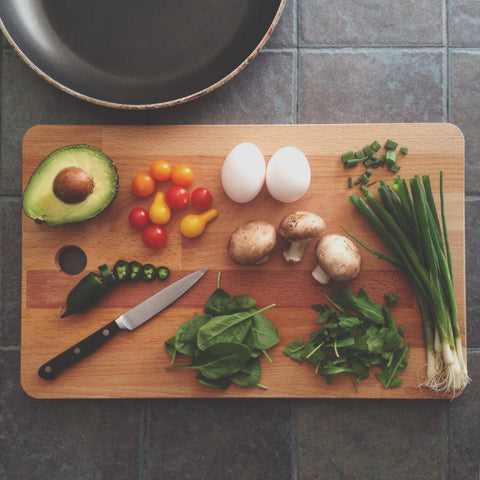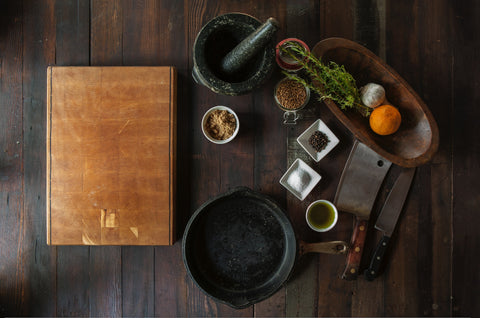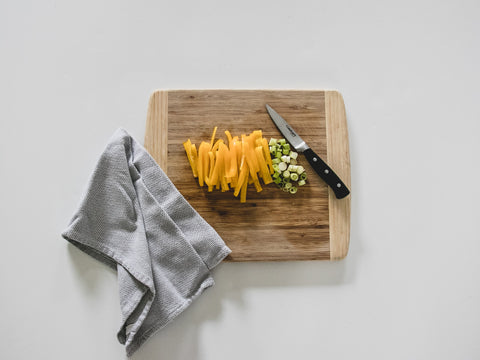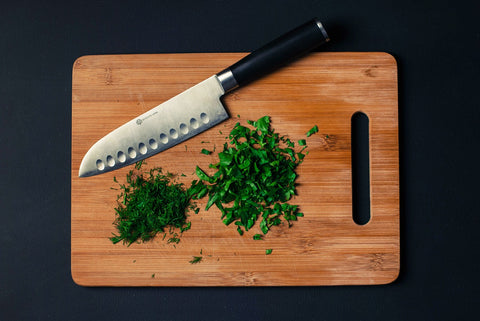How Well Do You Know Your Cutting Board? Here’s What You Should know
Cutting boards are some of the most important kitchen tools. But do you know your cutting board? Whether you’re a professional chef or an amateur home cook, it pays to brush up on some basics when selecting and caring for a cutting board.

Photo by Katie Smith on Unsplash
Wooden boards provide good grip and preserve knife edges, while plastic and rubber options are more hygienic but might cause the knives to become dull more quickly. Meanwhile, glass boards look great but can be slippery and hard on the blade. Ultimately, picking out the perfect cutting board for the kitchen comes down to balancing function and style according to one’s skillset and preferences.
No matter the type of chef you are, the one tool you’ll always use is a cutting board. But choosing the right cutting board can mean the difference between delicious vegetables and a sharp knife. So, how do you pick the right one for your cooking needs?
Let’s explore the options and identify which one best complements your kitchen.
- Is a bamboo cutting board safe?
A bamboo cutting board is an excellent choice for someone looking to upgrade their kitchen sustainability. Not only are they totally safe and earth-friendly, but they also look lovely in any kitchen as they come in a variety of designs. In addition, the natural anti-bacterial properties of the board make them a very hygienic option. With the right care, it can last for years without getting stained or warped!

Doubling up as both a display piece and an item of functionality, bamboo cutting boards are an aesthetically pleasing, cost-effective, and eco-conscious way to improve your kitchen utilities.
- How thick should a wood cutting board be?
Finding the perfect thickness for a wood cutting board can be a difficult task. On the one hand, you want a board thick enough to prevent scratches and knife nicks but also light enough to maneuver around easily.
Strike the ideal balance and go with a 1¼ to 2-inch thickness – it’s the perfect mix between protection and convenience. Not only is it just the right weight, but the thickness also provides durability while still allowing knives to cut through easily. Plus, 1¼ to 2 inches of wood ensures that your boards stay stable on any countertop or surface. So get all the best attributes offered by a wood cutting board with no compromises; make sure your board is 1¼ to 2 inches thick!
- Is it okay to cut vegetables on a cutting board after you have cut raw meat?
There’s nothing quite like the satisfaction of preparing a delicious meal for friends and family. But if you’re faced with the awkward dilemma of wanting to cut vegetables on the same cutting board used to slice up raw meat, don’t fret.

Photo by Debby Hudson on Unsplash
Properly cleaning and sanitizing your cutting board with soap and hot water can make this commonly asked question a non-issue. With just a few simple steps, you’ll have your cutting board fresh and ready for your next culinary masterpieces!
- What Should You Consider When Choosing a Cutting Board?
When it comes to preparing food and mastering culinary creations, the cutting board is often our most indispensable and loyal companion. From rolling dough to slicing vegetables, the cutting board is the backbone of any strategy for successful, delicious meals. With such an important role in kitchen craftsmanship, choosing the perfect one can make all the difference! Make sure to consider the material – wood or plastic, the size that fits your kitchen prep space and style preferences, weight for easier maneuvering and cleaning, texture that avoids slippage when chopping, smoothened edges – so you don’t cut yourself during the wash-up time, and lastly but certainly not least – a surface that doesn’t dull your knives! Have fun shopping – your future meals depend on it!
- What are the Pros and Cons of Different Types of Cutting Boards?
While it’s true that all cutting boards serve the same purpose, there are also a variety of materials used to make them. In addition, each type of board has its own pros and cons.
Wooden boards endure well over time and have a natural feel, proving to be the ideal choice for most cooks. However, they can develop slices that must be sanded periodically, or else bacteria might grow in them.
Plastic cutting boards are lightweight and usually come with textured surfaces for better grip. On the other hand, plastic absorbs odors and can’t tolerate high heat exposure like wooden boards do.

Image by StockSnap from Pixabay
Glass boards are easy to clean, but they dull knives quickly, and since they are brittle, they can easily shatter if they get dropped.
So while it is important to be mindful of the knife’s quality on whichever type of board is selected, it’s just as important to choose the right cutting board material to ensure its success in delivering consistent performance throughout its lifetime.
- How to Clean and Sanitize Your Cutting Board?
Keeping your cutting board clean and sanitized has never been easier! You just have to follow a few easy steps. Start by scrubbing the cutting board with hot, soapy water and a sponge.
For wooden cutting boards, it can also be beneficial to use some white vinegar in the water for additional cleaning power. Next, dry the cutting board with a clean towel and then use bleach or other disinfectants to wipe down the surface of both sides. Finally, let the board air-dry, and you’re all set! Your cutting board is now sparkling clean and ready for use.
To conclude, here’s what you need to know: There are a variety of materials, shapes, and sizes of cutting boards. Clever cleaning and storage tips will help keep your board in great condition. With the right knowledge, you can make sure that you always have the perfect cutting surface for slicing, dicing, mincing, and more. Unlock the key to effortless cooking with a top-notch cutting board, and you’ll be able to prepare delectable dishes in no time!

